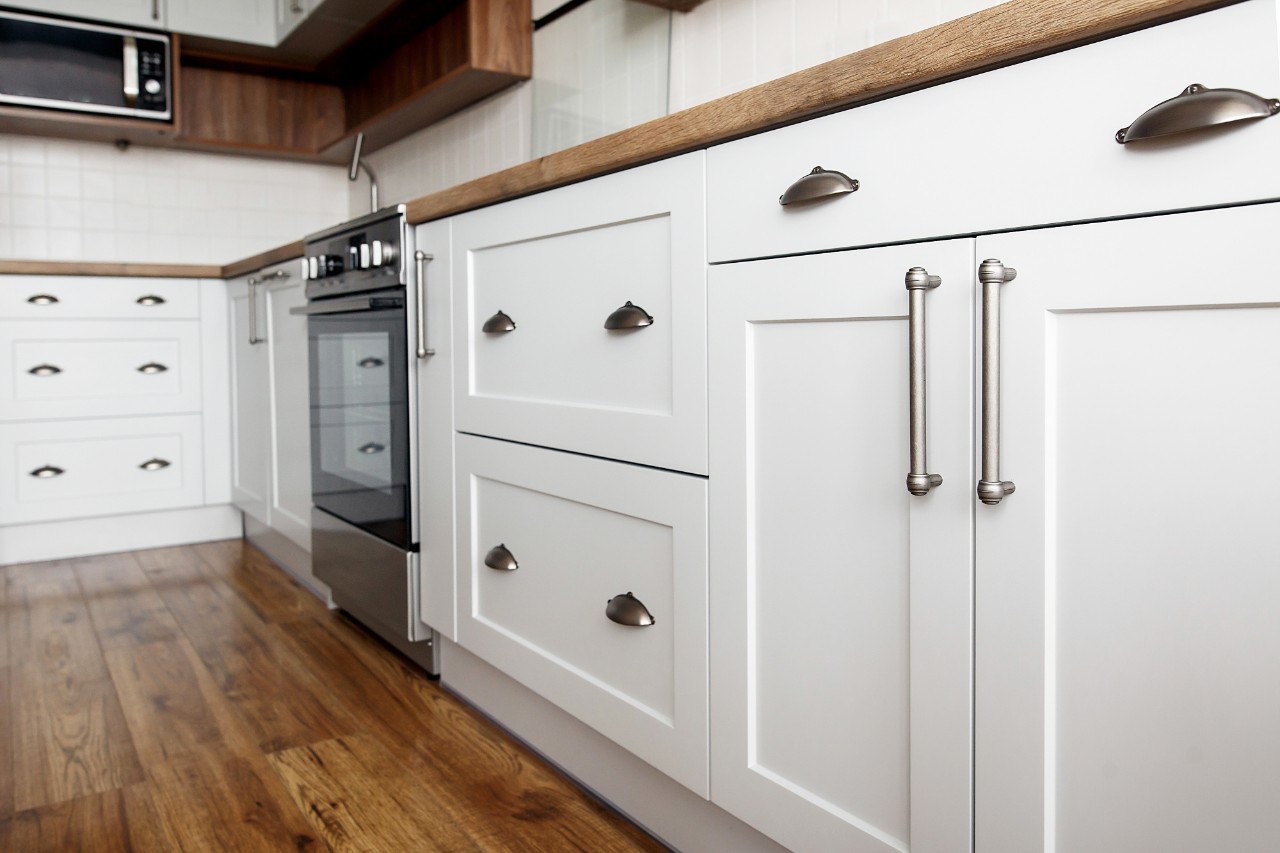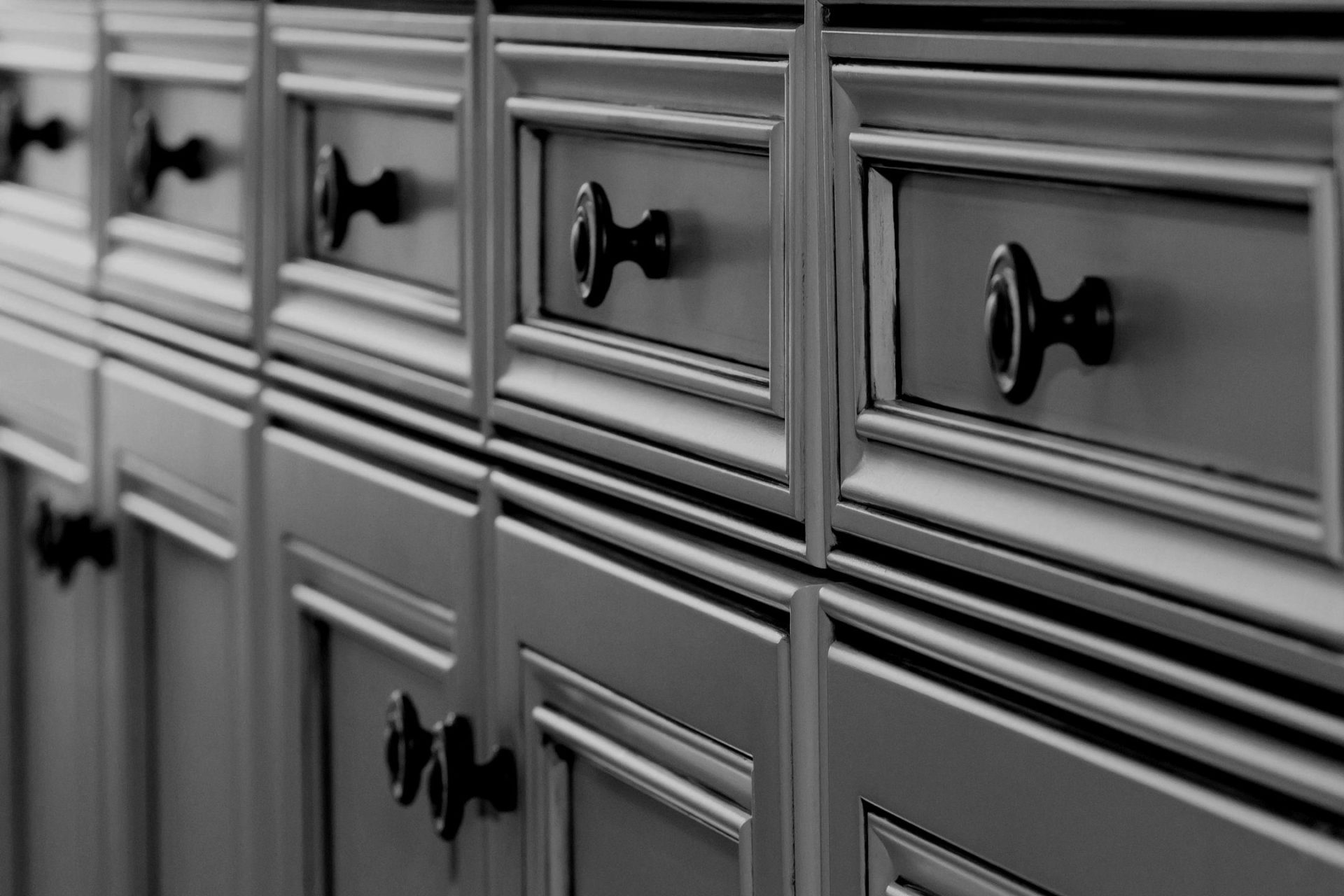
01 Feb Choosing the Right Materials for Your Kitchen Cabinets
When it comes to kitchen remodels, purchasing new cabinets can make a world of a difference. It’s a change that you’ll notice every day, whether you’re brewing your morning coffee or cooking up dinner.
But which material will look best? To answer that, it’s a good idea to review all your options. You need cabinets that will stand the test of time in your home, and hold up to the heat and humidity in your kitchen. We’re going to go over some of the most popular materials used in kitchen cabinets, along with the pros and cons of each:
Stainless Steel
Transform your cozy kitchen into one that’s sleek, modern, and cutting-edge. Stainless steel is sure to leave an impression on anyone who sees your new cabinets. If you aren’t attached to the idea of wooden cabinets, this edgy metal can give your home a contemporary feel.
There’s a reason that this material is so popular in professional kitchens—it’s easy to clean, is stain-resistant, and highly durable. Stainless steel can hold its own against high heat and won’t crack under pressure. You won’t need to worry about this material changing shape due to humidity, which can sometimes be the case with wood.
Hardwood
Solid wood in a kitchen has an ageless beauty that’s appealing to many. It gives you the flexibility to stain the wood to any shade of your choosing. There are many options to choose from with hardwoods, from the look of the grain to the color. Select a kind of hardwood that matches your overall kitchen, whether that’s Cherry wood or Maple.
There are a few drawbacks to hardwoods. Since they’re made of solid wood, they can warp due to excess/deficient humidity. You’ll also need to be selective about what kind of wood you choose. Some species are softer than others and can be easily scratched.
The biggest barrier to purchasing hardwoods is the cost. However, there are other materials made of wood that are more affordable.
Plywood
You’ll see plywood cabinets in many kitchens due to their affordable price point, resistance to moisture, and sturdiness. This material is made up of layers of wood that are attached using heat, pressure, and glue. On the outermost layer is a piece of wood veneer or laminate.
Plywood can be made from many different kinds of wood. For example, a popular choice is 5′ x 5′ Baltic Birch Plywood. You can also find plywood that’s made from White Ash, Maple, and Walnut.
Take note of the grade of material that you’re purchasing. The higher it is, the better the quality will be, from its sturdiness to its appearance. For plywood of the highest quality, shop for Grade AA.
Medium-Density Fiberboard
If you’ve ever assembled a set of IKEA furniture, then you’re familiar with MDF. Composed of wood fibers, wax, and a binder (resin or glue), the material is formed under high pressure. It has a uniform and smooth surface, which makes it easy to paint. It resists cracking but is susceptible to moisture damage. If your kitchen lacks humidity control (like an exhaust fan), then you might be in trouble with MDF cabinets.
A sturdier option is high-density fiberboard—however, it will be more expensive.
Particleboard
For those who are remodeling on a budget, particleboard might be the way to go. To construct it, wood chips and sawdust are mixed with a binder. The mixture is laid into sheets and covered with laminate. If you aren’t happy with the look of the particleboard, you can also place wooden veneers over the top to give it a more refined appearance. A veneer is a thin layer of hardwood that’s removed from a real log.
Particleboard, which is also referred to as a low-density fiberboard, is light-weight. That means it won’t put a strain on the structure of your home. But its low price point comes at another cost: it isn’t as durable as other materials. If your kitchen cabinets tend to take a beating, then you might want to opt for a denser material.
Before you install your new kitchen cabinets, you’ll need to break down the old ones. The demolition process can be a messy one. But you’ll be grateful for it once you see the finished product.
The success of your remodel is, in part, determined by the materials that you use. Putting in the research before you purchase new kitchen cabinets will pay off. When you consider all your options, you can find the perfect material to suit your lifestyle and aesthetic preferences. Once you’ve made up your mind on which option fits best, be sure to contact the kitchen remodeling experts at New Generation Kitchen & Bath for a free quote and to start your process.




Sorry, the comment form is closed at this time.